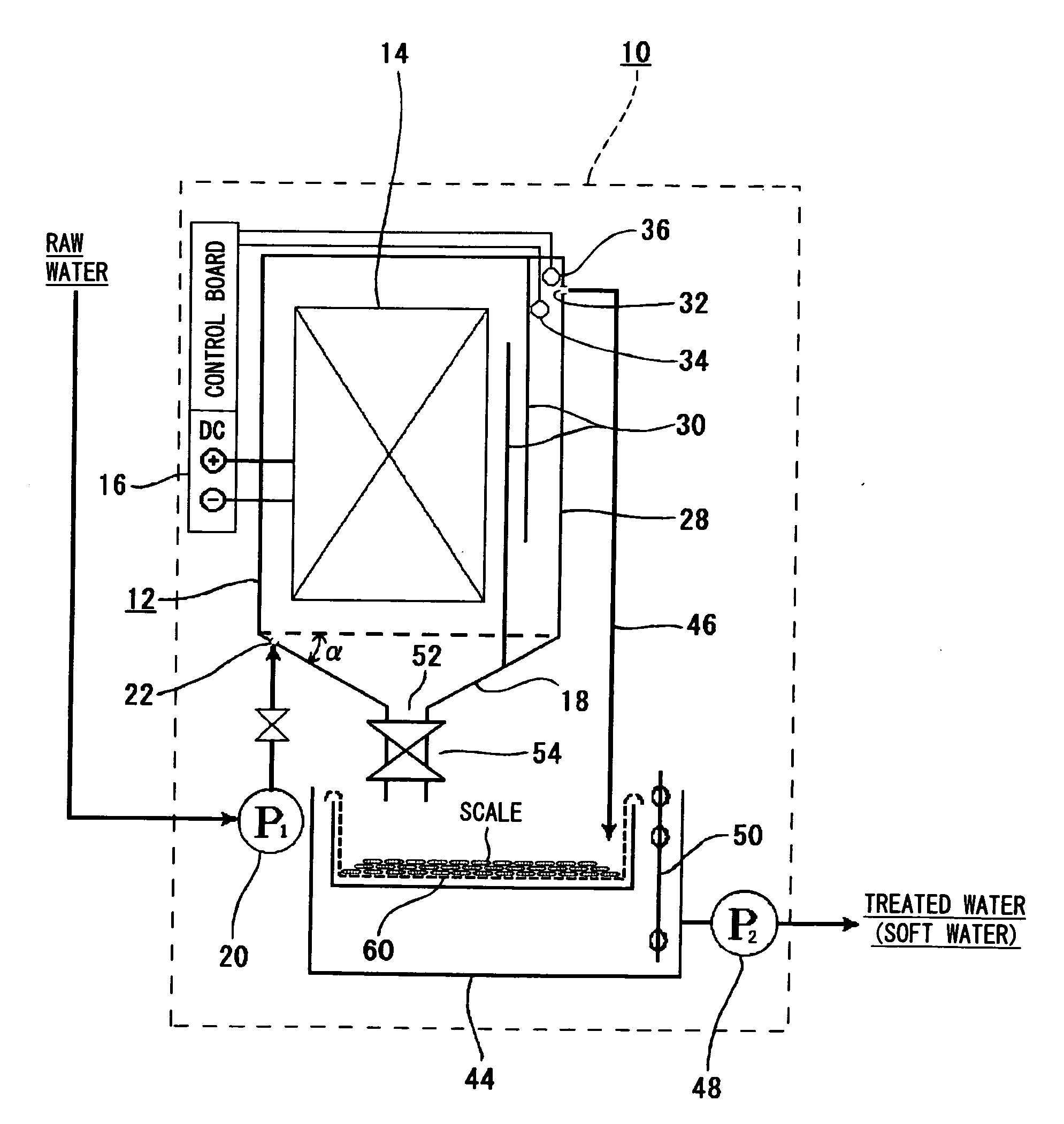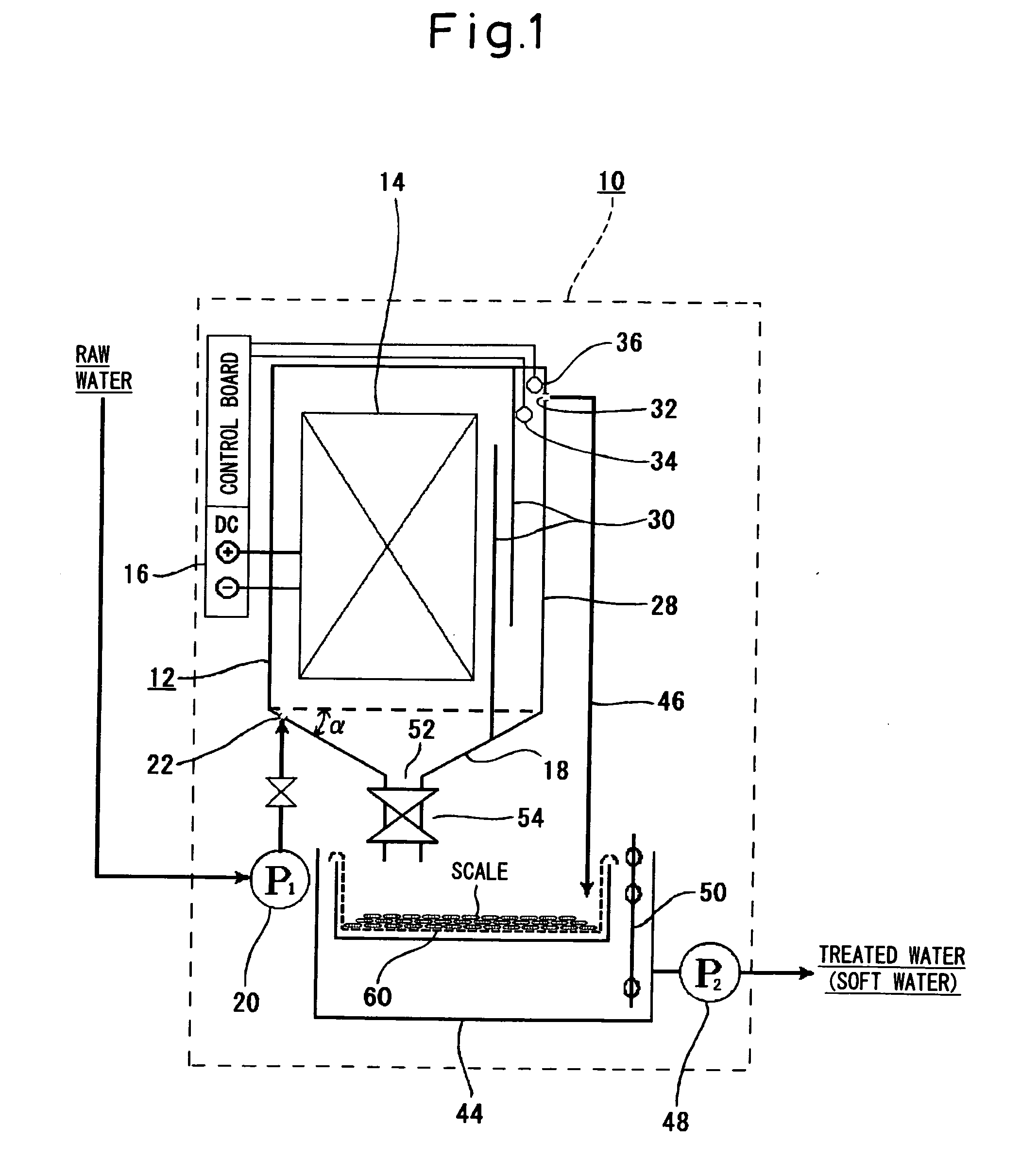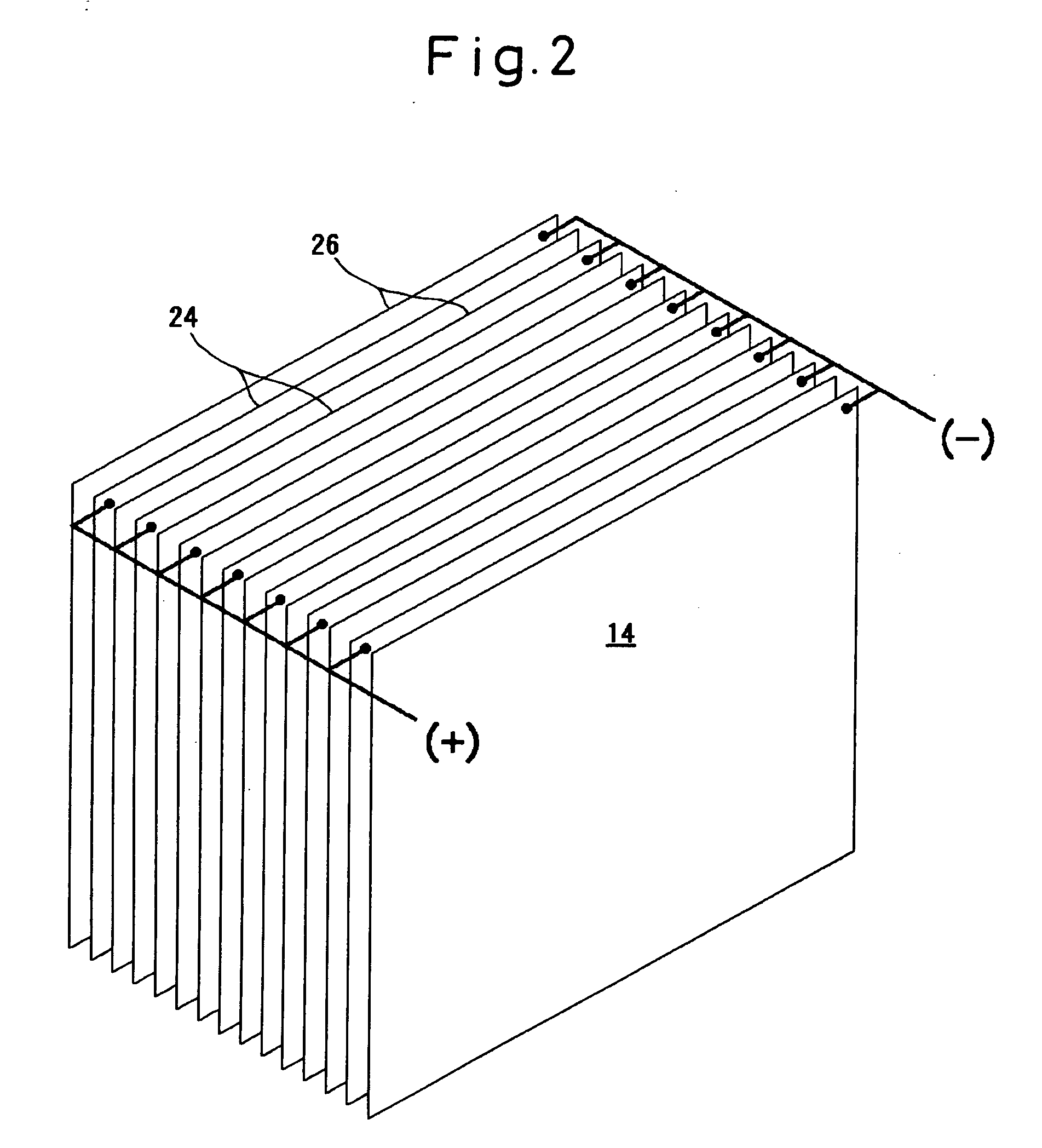Method of softening water and apparatus therefor
a technology of softening water and water cylinder, which is applied in the direction of manufacturing tools, electric circuits, electric circuits, etc., can solve the problems of insufficient softening of water to be treated, inability to use, and rapid corrosion of electrode plates, so as to reduce consumption of electrode plates
- Summary
- Abstract
- Description
- Claims
- Application Information
AI Technical Summary
Benefits of technology
Problems solved by technology
Method used
Image
Examples
example 1
[0061]Raw water (water to be treated) containing alkali components was passed through the apparatus of the invention to be softened.
[0062]The electrode plate unit 14 in the apparatus of the invention consisted of 72 pieces of titanium plates measuring 300 mm wide, 600 mm high and 1 mm thick, facing each other in a number of 36 pieces on each side maintaining a pitch of 24 mm. The DC source 16 was a constant-current DC power supply and fed a constant current of 6 A to the electrode plate unit 14.
[0063]A constant current flows across the electrode plates by the constant-current DC power supply. As shown in FIG. 4, therefore, the voltage across the electrode plates is 0.5 V at first. As the anodically oxidized film forms on the surfaces of electrode plates on the positive pole side and its resistance increases, however, the voltage gradually increases and reaches about 18 V. If the voltage rises up to this value, the anodically oxidized film is dielectrically broken down and peels off ...
example 2
[0065]The density of electric current flowing into the electrode plate unit was varied at three levels, i.e., 0.7 A / m2, 1.4 A / m2 and 2.1 A / m2, and the experiment was conducted in the same manner as in Example 1. The conductivities of water being treated were as shown in FIG. 6. From the experiment, it was found that the conductivity of water to be treated could be decreased in a shorter period of time if the current density was increased.
example 3
[0066]The operation was continued for one week under the conditions of Example 1, and thereafter, the operation was conducted by reversing the polarity. Scale adhered on the surfaces of the positive electrodes (which had been negative electrodes before the reverse) was peeled off in about 6 hours, and deposited in the bottom of the electrolytic vessel.
[0067]The operation was further continued in this state for one week, and the scale adhered on the surfaces of the negative electrodes, as was the case with the initial operation. However, it was expected that if the operation was continued, then the scale remains adhered on the negative electrodes and it would become difficult to recover the scale and the scale fixing efficiency would decrease due to the electrolytic resistance. Therefore, the operation was carried out by alternately changing the polarity every week. As a result, the scale adhered on the negative electrodes was efficiently peeled off and deposited on the bottom of the...
PUM
| Property | Measurement | Unit |
|---|---|---|
| Electrical conductivity | aaaaa | aaaaa |
| Area | aaaaa | aaaaa |
| Reduction potential | aaaaa | aaaaa |
Abstract
Description
Claims
Application Information
 Login to View More
Login to View More - R&D
- Intellectual Property
- Life Sciences
- Materials
- Tech Scout
- Unparalleled Data Quality
- Higher Quality Content
- 60% Fewer Hallucinations
Browse by: Latest US Patents, China's latest patents, Technical Efficacy Thesaurus, Application Domain, Technology Topic, Popular Technical Reports.
© 2025 PatSnap. All rights reserved.Legal|Privacy policy|Modern Slavery Act Transparency Statement|Sitemap|About US| Contact US: help@patsnap.com



